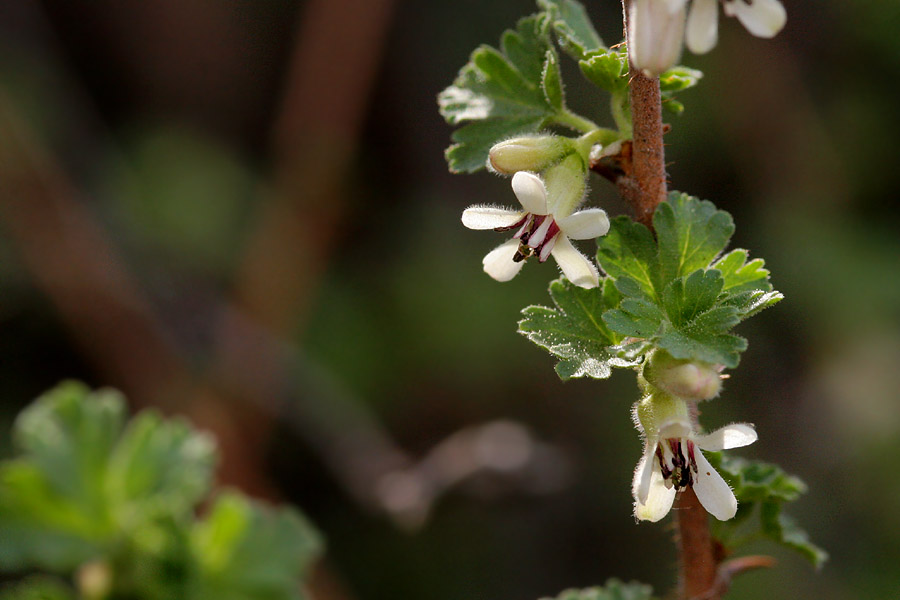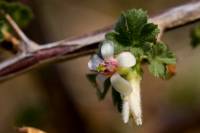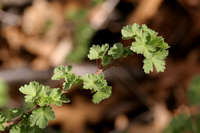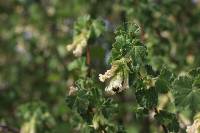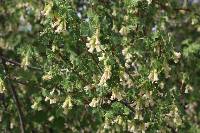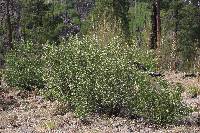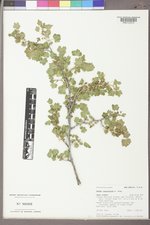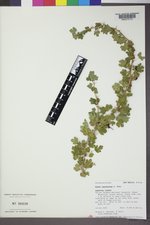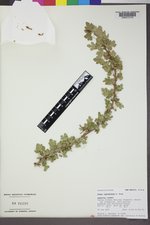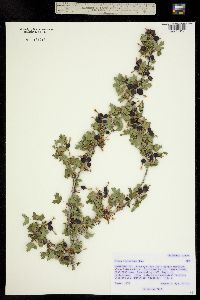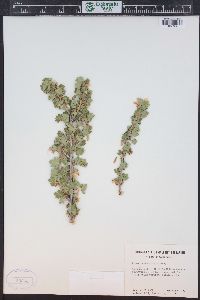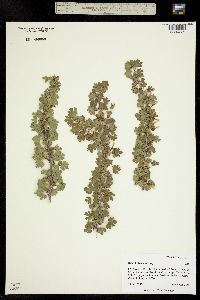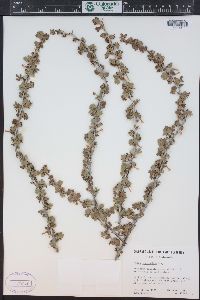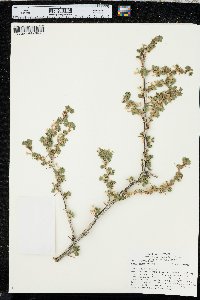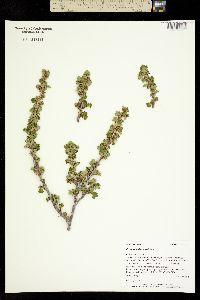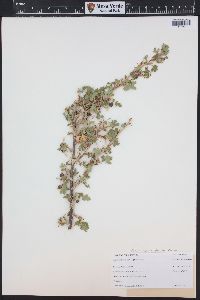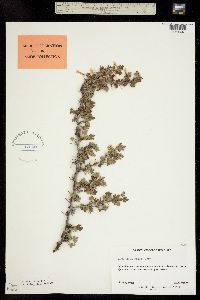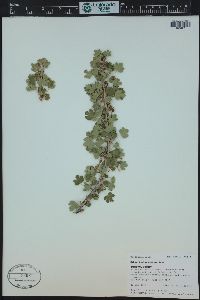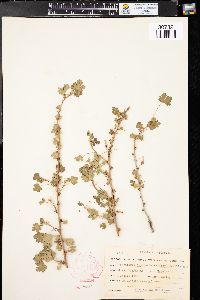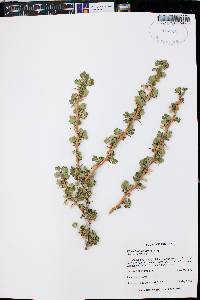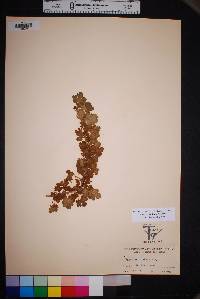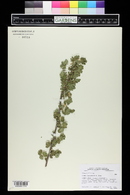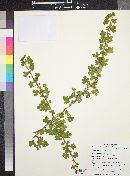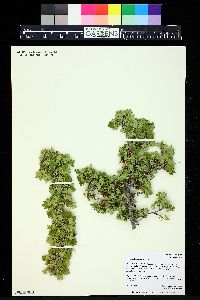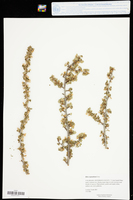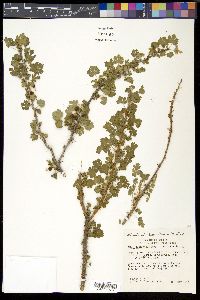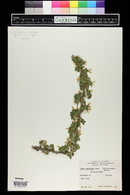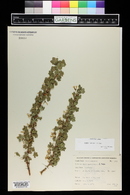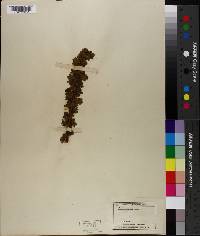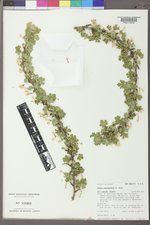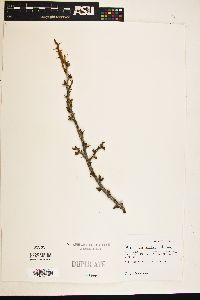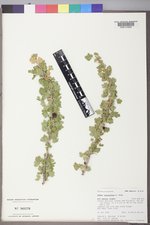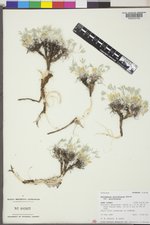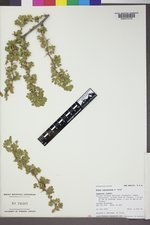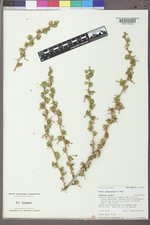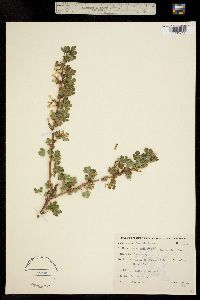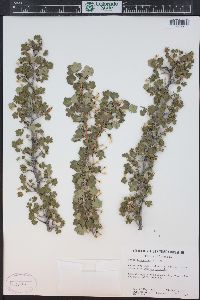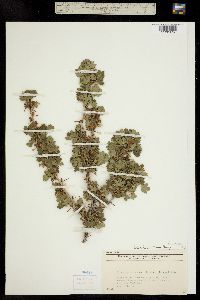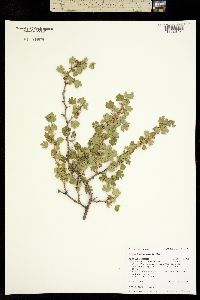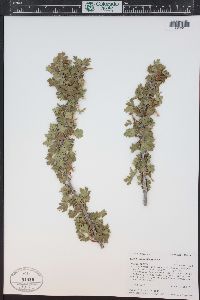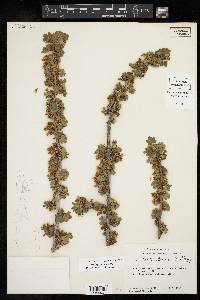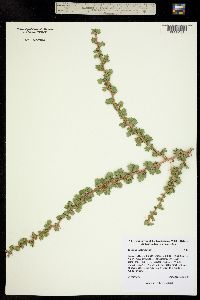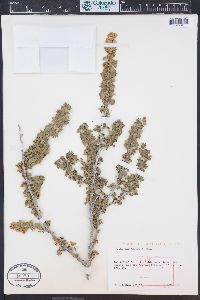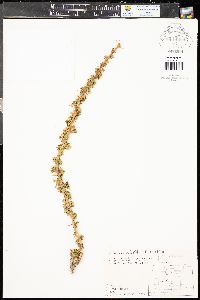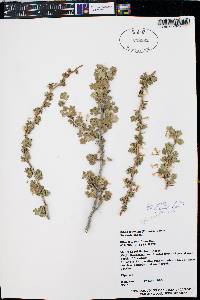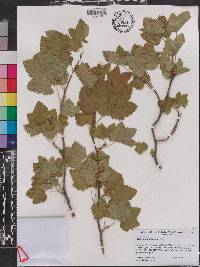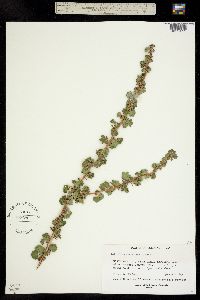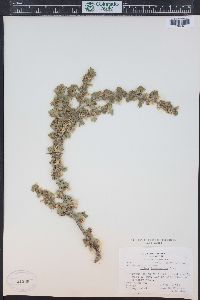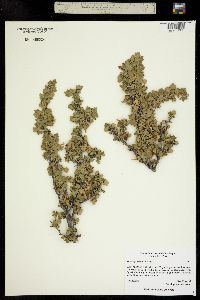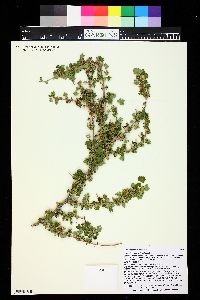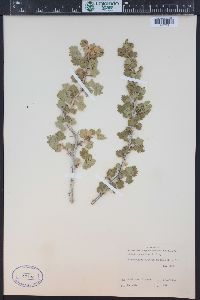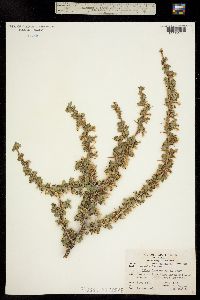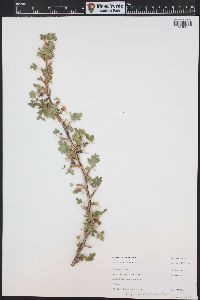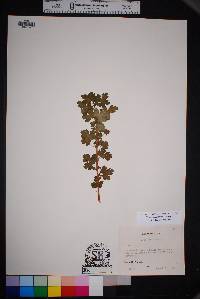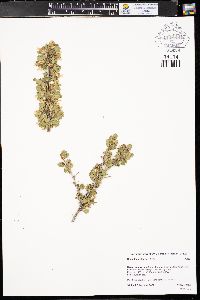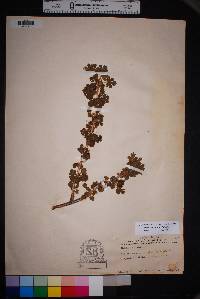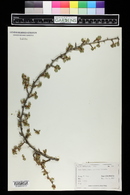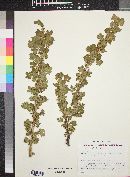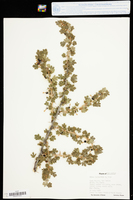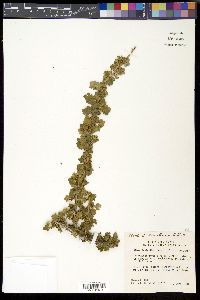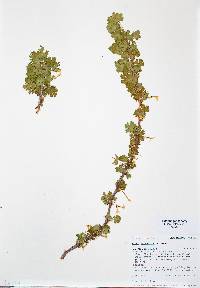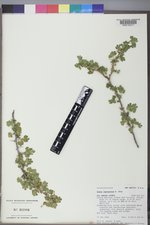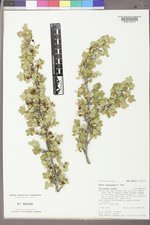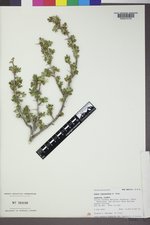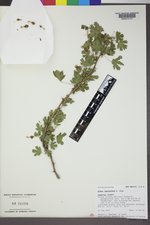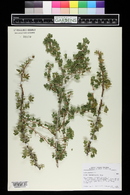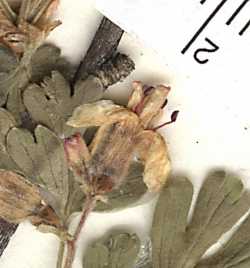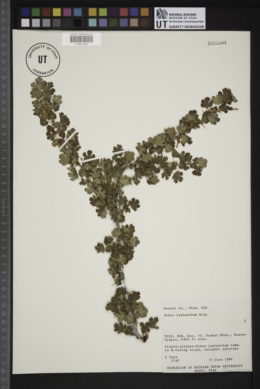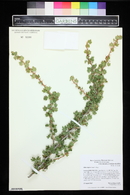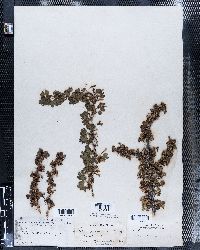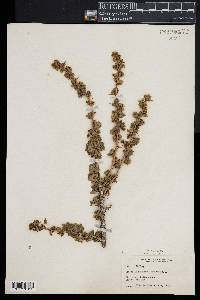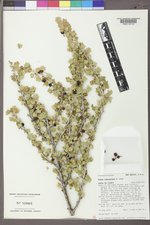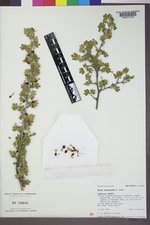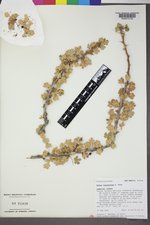
|
|
|
|
Family: Grossulariaceae
Trumpet Gooseberry
|
Plants 0.5-2 m. Stems erect or arching, crisped-puberulent, gla-brescent; spines at nodes 1-3, 2-19 mm; prickles on inter-nodes absent or sparse to dense. Leaves: petiole (0.1-)0.7-2(-4) cm, crisped-puberulent; blade orbiculate or reniform-orbiculate, 3-5(-7)-lobed, cleft nearly to midrib, 0.5-1.6(-2.7) cm, base subcordate or truncate, surfaces usually glabrous, sometimes puberulent, rarely glandular-pubescent, lobes oblong to cuneate, margins with acute teeth, sometimes revolute, apex rounded. Inflorescences pendent, solitary flowers or 2(-4)-flowered racemes, 1.5-2.5 cm, axis puberulent, flowers evenly spaced. Pedicels not jointed, 0.5-1 mm, puberulent; bracts lanceolate, 0.5-4 mm, (with 2 smaller bractlets immediately proximal to each flower), puberulent. Flowers: hypanthium greenish white to white, tubular, (2.3-)4-6 mm, softly hispid abaxially, glabrous adaxially; sepals not overlapping, spreading, greenish white to white, lanceolate, (2.5-)3.5-7 mm; petals nearly connivent, erect, cream with red margins, whitish or pinkish, oblanceolate to spatulate-obovate, not conspicuously revolute or inrolled, 2-4.4 mm; nectary disc not prominent; stamens nearly as long as petals; filaments linear, 1.3-3 mm, glabrous; anthers cream to violet, oval, 0.5-1.6 mm, apex with cup-shaped depression; ovary pubescence not bristly, hairs soft; styles connate nearly to stigmas, 0.7-1 mm, glabrous. Berries palatable, dark red to black, globose, 5-10 mm, glabrous, sometimes sparsely puberulent or glandular-pubescent. 2n = 16. Flowering Apr-Jun(-Jul). Coniferous forests; 1700-3000 m; Ariz., Colo., N.Mex., Tex., Utah. FNA 2009, Kearney and Peebles 1969, Martin and hutchins 1980 Common Name: trumpet gooseberry Duration: Perennial Nativity: Native Lifeform: Shrub General: Spiny shrubs, 0.5 to 2 m tall; stems rarely bristly or prickly; each stem node has 1-3 spines, 2-19 mm long. Leaves: Alternate, on petioles up to 12 mm long; blades 5-20 mm wide, circular to kidney-shaped in outline and deeply palmately 5-lobed, with some of the main lobes in turn shallowly lobed or toothed; surfaces most often glabrous but sometimes pubescent or rarely glandular. Flowers: White to pink, solitary or in clusters of 2 or 3 in leaf axils; sepals fused into a cylindric tube, with 5 spreading to reflexed lobes at the top; the tube is 4-5 mm long, light greenish and pubescent, while the lobes are whitish, also 4-5 mm long, and appear petal-like; petals 5, smaller than the sepal lobes, white to pinkish red. Fruits: Berries dark red to black, globose, 5-10 mm diameter, smooth or occasionally pubescent or bristly. Ecology: Found along streams in coniferous forests, from 5,500-10,000 ft (1676-3048 m); flowers April -July. Distribution: CO, UT, NM, AZ. Notes: There are several species of Ribes in the mountains of the Southwest. R. lepanthus is distinguished by the hairy, greenish-white cylindric calyx tube, 4-5 mm long; the calyx lobes which are also hairy and appear petal-like; the berry which is nearly black at maturity and usually not hairy, glandular, or spiny. If flowers and fruit are not available, focus on vegetative characters: the spines at the stem nodes are most often one per node but sometimes 2 or 3; there are generally no bristles on the stems between nodes; and leaf blades are no more than 2 cm wide. The species is most often found at 6,000-8,500 ft but may be found as high as 10,000 ft. Ethnobotany: Fruit used as a food source. Etymology: Ribes is from the Persian word ribas, which alludes to the tart taste of the berrries; leptanthum means slender-flowered. Synonyms: Grossularia lepantha Editor: LCrumbacher 2011, AHazelton 2017 |
|
|
|
This project was made possible in part by the Institute of Museum and Library Services [MG-70-19-0057-19].
Powered by Symbiota

